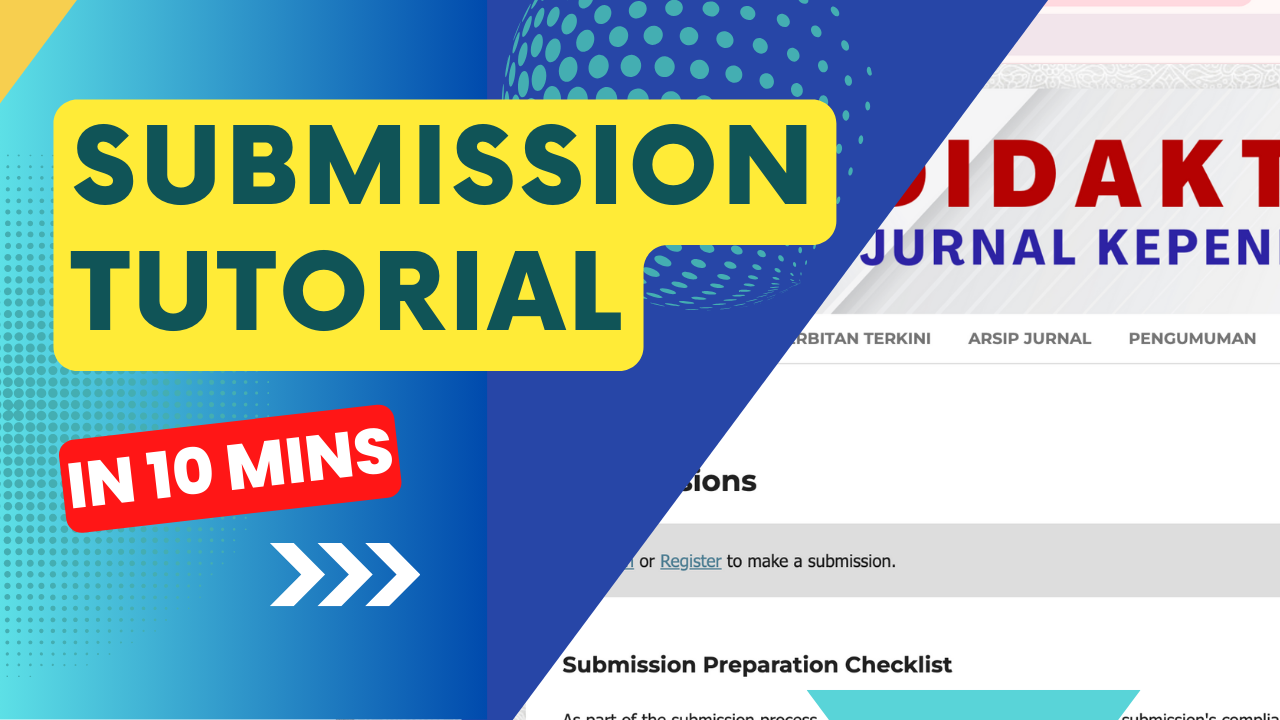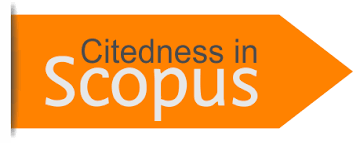Improving Mathematical Literacy Ability and Learning Independence of SDN 29 Pardomuan 1 Students through the Application of Realistic Mathematics Learning Approaches
Abstract
This research was motivated by the low level of mathematical literacy skills and student independence at school. The focus of the problems studied in this research includes 1) Students' mathematical literacy abilities; 2) Student learning independence; 3) Realistic Mathematics Learning Process; 4) Increasing students' mathematical literacy skills and learning independence in the experimental class and control class; 5) The influence of PMR on students' literacy skills and learning independence in the experimental class. The research method used is quasi-experimental, pretest posttest type. The research population included all fifth-grade students at SDN 29 Pardomuan. The treatment given to the experimental class was Building Space learning using a Realistic Mathematical Approach model. Data analysis was carried out using quantitative analysis. The results of data calculations through statistical tests obtained 1) There is a positive (unidirectional) influence between the Educational Learning Model on Mathematical Literacy Ability with the Sig. Educational Learning Model value (0.000) < 0.05 and the calculated t value (3.838) > t table (1.995); 2) There is a positive (unidirectional) influence between the Educational Learning Model on Student Learning Independence and the Sig. Educational Learning Model (0.000) < 0.05 and calculated t value (4.487) > t table (1.995); 3) There is a positive (unidirectional) influence between the Educational Learning Model on Mathematical Literacy Ability and the Sig value. Educational Learning Model (0.000) < 0.05 and calculated t value (3.838) > t table (1.995); 4) There is a positive (unidirectional) influence between the Educational Learning Model on Student Learning Independence with the Sig. Educational Learning Model value (0.000) < 0.05 and the calculated t value (4.487) > t table (1.995).
Metrics
References
Afendi, A. H., Darmini, M., Sutisno, A. N., & Aziz, N. A. (2022). Penerapan Model Pembelajaran Inkuiri Dalam Meningkatkan Nilai Kemandirian Belajar Siswa Sekolah Dasar. Jurnal PGSD. https://doi.org/10.32534/jps.v8i1.2956
Astuti, P. (2018). Kemampuan Literasi Matematika dan Kemampuan Berpikir Tingkat Tinggi. Journal Reseapedia, 263–268.
Desiana, G. A., Sulastri, S., & Syahrial, S. (2022). Penerapan Model Pembelajaran Project Based Learning (Pjbl) Pada Pembuatan Koloid Untuk Meningkatkan Keterampilan Berpikir Kritis Dan Kemandirian Belajar Siswa. JTK (Jurnal Tadris Kimiya), 7(1), 37–52. https://doi.org/10.15575/jtk.v7i1.13395
Hasbi, H., Pebriana, P. H., Haidar, I., Sitinjak, L., Alfiyanto, A., Riyadi, I., & Hidayati, F. (2022). Program Bimbingan Belajar Menggunakan Alat Peraga Kubus dan Balok Untuk Memahami Volume Bangun Ruang Kubus dan Balok Pada Siswa Kelas VI SD. Indonesia Berdaya. https://doi.org/10.47679/ib.2022294
Hwang, G.-J. (2022). Education. In Building Markets (pp. 101–125). Edward Elgar Publishing. https://doi.org/10.4337/9781789901085.00013
Ike, F., & Suhendri, H. (2021). Analisis Kemampuan Pemahaman Konsep Matematis Siswa Kelas V Pada Materi Kubus Dan Balok. International Journal of Progressive Mathematics Education, 1(2), 161–183. https://doi.org/10.22236/ijopme.v1i2.7308
Rodríguez-Muñiz, L. J., Aguilar-González, Á., Lindorff, A., & Muñiz-Rodríguez, L. (2022). Undergraduates' conceptions of mathematics teaching and learning: an empirical study. Educational Studies in Mathematics, 109(3), 523–547. https://doi.org/10.1007/s10649-021-10105-5
Sohaimi, A. S., Sari, D. M., Purba, R. D. S., & Badawi, R. (2022). Analysis of Mathematics Literacy Ability. Logaritma : Jurnal Ilmu-Ilmu Pendidikan Dan Sains, 10(2), 181–194. https://doi.org/10.24952/logaritma.v10i2.6143
Street, K. E. S., Malmberg, L. E., & Stylianides, G. J. (2022). Changes in students' self-efficacy when learning a new topic in mathematics: a micro-longitudinal study. Educational Studies in Mathematics, 111(3), 515–541. https://doi.org/10.1007/s10649-022-10165-1
Sugiyono. (2019). Metode Penelitian Kuantitatif, Kualitatif, dan R&D. Alphabet.
Takaria, J., Wahyudin, W., Sabandar, J., & Dahlan, J. A. (2020). Relationship Between Statistical Literacy And Mathematical Representation Of Students Through Collaborative Problem Solving Model. Infinity Journal, 9(2), 183. https://doi.org/10.22460/infinity.v9i2.p183-196
Yulianty, N. (2019). Kemampuan Pemahaman Konsep Matematika Siswa Dengan Pendekatan Pembelajaran Matematika Realistik. Jurnal Pendidikan Matematika Raflesia, 4(1), 60–65. https://doi.org/10.33449/jpmr.v4i1.7530
Copyright (c) 2024 Resti Haryanti Sidebang, Muhammad Amin Fauzi, Sendi Ramdhani

This work is licensed under a Creative Commons Attribution 4.0 International License.
Dengan mengirimkan naskah artikel, berarti penulis setuju dengan segala kebijakan yang ditetapkan oleh jurnal dan penerbit.
Penulis menyatakan bahwa:
- kebijakan ini telah diketahui dan disetujui bersama oleh semua penulis;
- naskah artikel belum dipublikasikan secara resmi sebelumnya di media ber-ISSN atau ber-ISBN yang terdaftar, kecuali dalam bentuk abstrak atau sebagai bagian dari materi kuliah, atau skripsi/tesis/disertasi yang tidak diterbitkan;
- naskah tidak sedang dalam proses editorial dan dipertimbangkan untuk publikasi di tempat lain;
- publikasi naskah ini telah disetujui oleh semua penulis, institusi afiliasi penulis, otoritas yang bertanggung jawab, dan lembaga di mana kegiatan telah dilakukan;
- naskah berisi materi yang aman dari pelanggaran hak cipta;
Perjanjian Hak Cipta dan Lisensi
- Penulis memiliki hak cipta dan hak kepemilikan lainnya yang terkait dengan artikel.
- Penulis memiliki hak dan diizinkan untuk menggunakan substansi artikel untuk karya-karya penulis berikutnya, termasuk untuk keperluan bahan/materi kuliah dan buku.
- Penulis menyerahkan hak publikasi pertama kepada jurnal dengan di bawah Lisensi Creative Commons (CC BY 4.0).
Pernyataan Lisensi CC BY 4.0
Anda diperbolehkan:
- Berbagi — menyalin dan menyebarluaskan kembali materi ini dalam bentuk atau format apapun;
- Adaptasi — menggubah, mengubah, dan membuat turunan dari materi ini untuk kepentingan apapun, termasuk kepentingan komersial.
Pemberi lisensi tidak dapat mencabut ketentuan di atas sepanjang Anda mematuhi ketentuan lisensi berikut ini.
- Atribusi — Anda harus mencantumkan nama yang sesuai, mencantumkan tautan terhadap lisensi, dan menyatakan bahwa telah ada perubahan yang dilakukan. Anda dapat melakukan hal ini dengan cara yang sesuai, namun tidak mengisyaratkan bahwa pemberi lisensi mendukung Anda atau penggunaan Anda.
- Tidak ada pembatasan tambahan — Anda tidak dapat menggunakan ketentuan hukum atau sarana kontrol teknologi yang secara hukum membatasi orang lain untuk melakukan hal-hal yang diizinkan lisensi ini.





.png)








